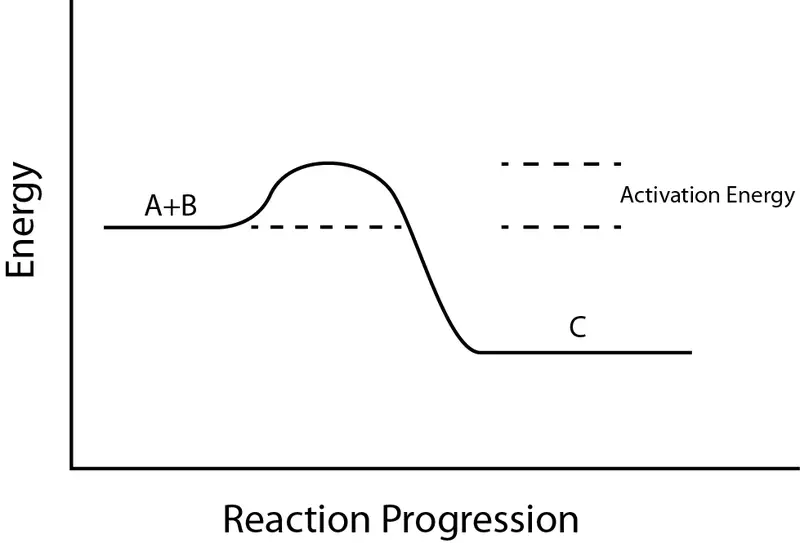Activation Energy Formula
This article deals with the activation energy formula. Activation energy refers to the minimum amount of energy needed that can bring about the activation of atoms or molecules to a condition where they can perform a chemical transformation or physical transport.
What is Activation Energy?
It refers to the difference in energy content between molecules and atoms, such that it is in a configuration of activation or transition-state and the corresponding atoms and molecules remain in their initial configuration.

One can think of the Activation energy as the magnitude of the potential barrier that separates the minima of the potential energy surface and the final thermodynamic state. Also, it is the minimum energy that a system must possess for enabling the reactions of molecules to the expected products.
The Formula of Activation Energy
The measurement of the Activation energy takes place in the International System Unit of energy Joule (J) or kilojoules per mole
According to the concept of activation energy, every reaction happens to have a potential barrier or minimal energy. Moreover, this particular reaction must have the molecules in order to stretch, bend or break bonds. Consequently, this facilitates the formation of the products of the reaction.
Most noteworthy, the production of this minimal energy comes from the collisions of molecules that happen all the time. Also, in case the temperature of the system is high, more collisions will result. This particular collision ultimately means the availability of more kinetic energy. Hence, this kinetic energy will be available for reaching the activation energy.
The derivation of the activation energy formula is from the Arrhenius Equation. Moreover, its expression is as follows:
k =
Here A happens to be the pre-exponential factor that facilitates the reaction. Furthermore, the reaction is nearly constant. Moreover, the reaction depends upon the temperature. Ea happens to be the activation energy while the gas constant is R.
Also, T refers to the temperature while k refers to the reaction rate constant. Above all, one can note three important factors whose incorporation took place by Arrhenius. The first factor is that the molecules consist of potential which is important for the reaction. Secondly, collisions take place between molecules factor. Finally, the number of collisions that tends to have the factor of appropriate orientation.
Derivation of the Activation Energy Formula
The activation energy formula certainly is k =
Consider a situation where one rearranges this formula and takes the natural log of this particular. Moreover, one can put it into the format of a straight line.
In k =
y = mx + b
Now one use it to calculate the Activation Energy by making use of the graphing ink versus 1/T.
One can also derive the activation energy formula in an algebraic manner. Furthermore, ere one undertakes the substitution of two rate constants (A1, A2) and the corresponding two temperatures (T1,T2) into the Arrhenius equation:
InK =
InK1 =
InK2 =
Now, substracting the equation (4) from (3) gives the result
Finally, rearranging of equation (5) and solving Ea yields
Ea =
Use of Activation Energy Formula
The activation energy is formula is crucial in theoretical calculation with relation to the use of catalysts. Furthermore, it is essential for modeling various biological systems such as the enzyme-substrate systems. Most noteworthy, one can model such systems by making use of the activation energy equation.
Solved Example For You
Question- Find out the activation energy, considering that k =
Answer- k =
R happens to be a gas constant whose value is 8.314 J/ molK, therefore
Ea = 21.91 kJ/mol
Hence, the activation energy is 21.91 kJ/mol.